Introduction
Toshiba Corporation, incorporated in Tokyo, Japan, is a multinational company. The company manufactures and trades in electronic equipment, power systems, household appliances, information and communication equipment, and internet services. The company is organized in to several divisions and subsidiaries. These are Digital Product Group, Electronic Devices & Components Group, Infrastructure System Group, Social Infrastructure System Company, Toshiba Consumer Electronics Holdings Corporation and other divisions. The company experienced a decline in financial performance over the past five years. The global financial crisis affected its large market hence the poor performance (Toshiba Corporation 10). This work carries out financial analysis of Toshiba Corporation using ratios.
Trend analysis
Trend analysis shows changes in performance of various entries in the financial statements. This section looks at the trend of sales and net income of the company over five years.
Table 1.0 sales and net income from 2009 to 2011
Source of data – Toshiba Corporation 58
From the table above, net sales of the company is on an upward trend since 2009. Similarly, net income declined by -80.32% in 2009. Thereafter it increased at a slow pace. Even though it is on a recovery trend, it is evident that the company experienced poor performance over the three year period characterized by negative net income.
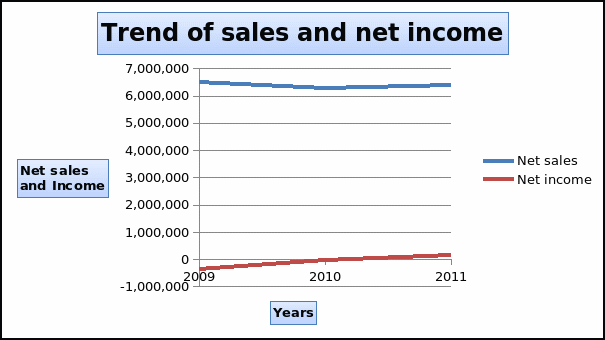
Current ratio
Current ratio is a liquidity ratio. It shows how easily a company can use current assets to pay current liabilities. It is computed through the division of current assets with current liabilities. A high ratio shows ability of the company to meet short term obligations.
Table 1.1 current ratios
Source of data – Toshiba Corporation 56
From the table above, current ratio had an erratic trend over the three year period. In 2009, the company had a low current ratio that is less than one. This implies that the company could not meet current obligation using current assets. However, current ratios of the company exceeded the industry average. The graph below shows the trend of current ratio.
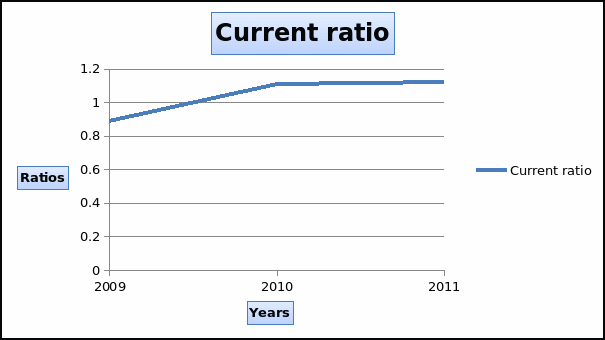
Debt to total asset ratio
The ratio measures financial leverage of the company. Division of debt by total assets gives debt to equity ratio. A ratio greater than 100% is unfavorable. It implies that most of the company’s assets are bought using money borrowed by the company. This puts the company in a risky position when the creditors demand their pay.
Table 1.2 debt to total assets ratios
Source of data – Toshiba Corporation 58
From the above table, debt to total asset ratio ranged between 49.37% and 58.33%. These ratios are favorable since they are less than 100%. It indicates that most of the assets are financed through equity. It also implies that debts of the company are adequately covered by total assets. However, these ratios are unfavorable since they are greater than the industry averages. The ratio had a declining trend over the three years which shows a good trend.
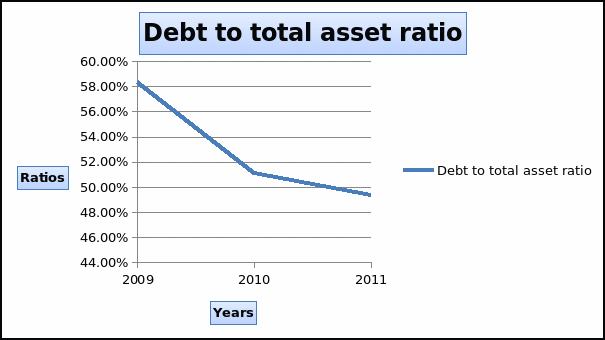
Profit margin ratio
Profit margin ratio shows the amount of profit a company makes from every unit of sales. A low ratio shows poor profitability. It may imply that company receives low earnings required to pay cost and profits. It may also that the company is inefficient in managing costs and pricing.
Table 1.2 profit margin ratio
Source of data – Toshiba Corporation 58
From the above table, the company had poor profit margin ratio ranging between -5.28% and 2.15%. This shows inefficiency in managing cost and pricing to generate profits. Negative ratios show extreme adverse performance. The company profitability ratio falls below the industry ratio for five years. Despite the low ratios, the company is on a recovery mission. The graph below shows trend of the profitability ratio
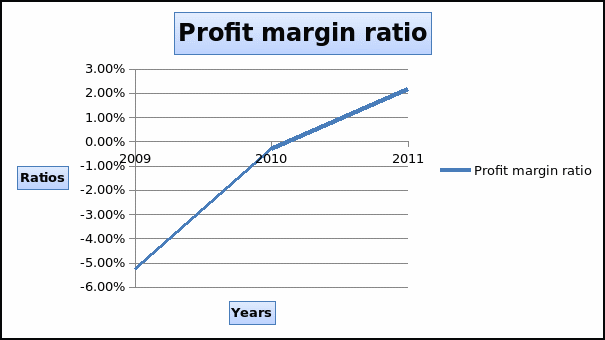
Inventory turnover ratio
The ratio measures the level of activity of the company. It shows the number of times in a period a company replaces inventory. It is obtained through division of cost of goods sold with average inventory. A high ratios shows fine level of activity
Table 1.3 inventory turnover ratio
Source of data – Toshiba Corporation 58
From the table, inventory turnover ratio and days in inventory for the company were fairly stable. The level of activity of the company is lower than the industry average. In addition, the level of activity of the company is reducing. The graph below shows the trend of inventory ratio.
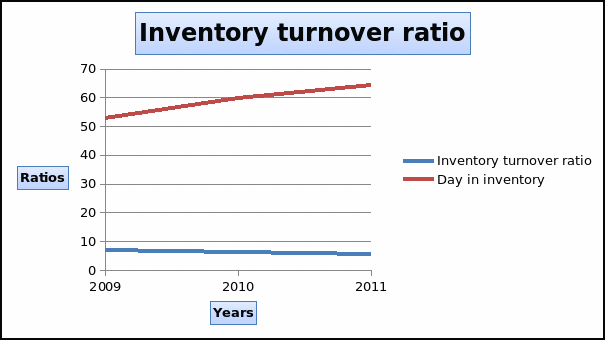
References
Toshiba Corporation 2012, Annual Report 2011 Operational Review. Web.
